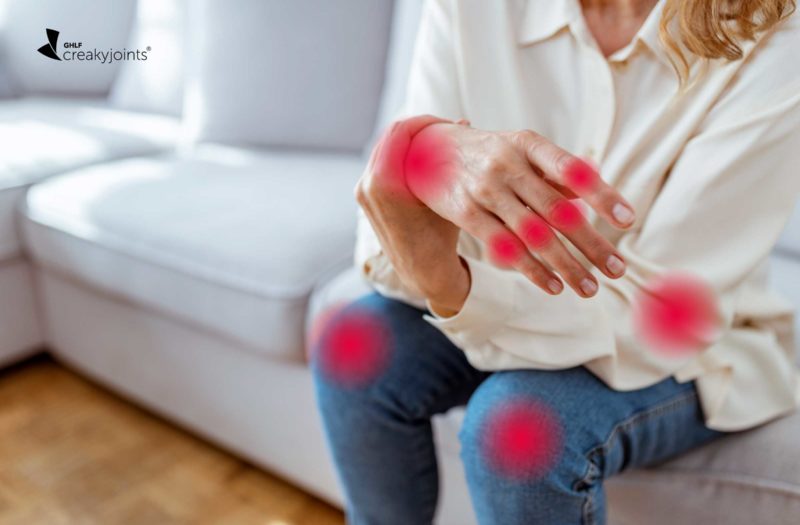Pain and inflammation are closely related when it comes to rheumatic diseases, but they’re not synonymous. Pain is the physical sensation of discomfort, while inflammation is your immune system’s response to an attack or injury. Inflammation is usually characterized by redness, swelling, warmth, and — you guessed it — pain.
When it comes to rheumatoid arthritis (RA), pain and inflammation might seem to be inextricably intertwined. In fact, some pain-relieving medications commonly used by people with RA are, by definition, anti-inflammatories. Popular non-steroidal anti-inflammatory drugs, or NSAIDs, include ibuprofen and naproxen. And biologic disease-modifying antirheumatic drugs for RA, like adalimumab (Humira) and infliximab (Remicade), work by targeting and combatting inflammation in the joints.
Although it might logically follow that relieving inflammation by any means should translate to a reduction in pain, that doesn’t always happen. A new study found that one-third of RA patients are still living with “unacceptably high” levels of pain five years after their initial diagnosis, even though nearly 23 percent of them have low levels of inflammation.
The study, published in the journal Arthritis Research & Therapy, analyzed data from 179 patients with early RA over the course of five years. Patients were assessed at baseline and again six months later, one year later, two years later, and at the five-year mark. At each visit, rheumatologists calculated patients’ disease activity (DAS28), counted tender and swollen joints, and assessed functioning and pain. They also measured two markers of inflammation in the blood, erythrocyte sedimentation rate (ESR) and C-reactive protein (CRP), at each visit.
By the five-year mark, most of the patients reported that they were being treated by their own clinician with methotrexate, though 17 percent also used a biologic at some point. For many of them, these treatments eased inflammation as well as pain, but some had failed to get adequate relief. Inflammation (as indicated by ESR and CRP) had declined substantially over the five years, but “pain improvement was only significant between [baseline] and the six-month visit,” the authors wrote, noting that the “average pain was thereafter essentially unchanged over time.”
This isn’t the first study to note that pain sometimes lingers even in the absence of inflammation.
“Several recent studies have reported that although pain outcome has improved in more recent years since the introduction of more extensive anti-rheumatic treatment and biologic therapy, there is still a group of patients with persistent pain,” the researchers explained. “This points to substantial unmet needs regarding pain management… [which] might include encouraging patients to engage in physical activity, pain-coping strategies, and pain-modulating treatment.”
Track Your Symptoms with ArthritisPower
Join CreakyJoints’ patient-centered research registry and track symptoms like fatigue and pain. Join now.
Ebberhand A, et al. Predictors of unacceptable pain with and without low inflammation over 5 years in early rheumatoid arthritis—an inception cohort study. Arthritis Research & Therapy. June 14, 2021. doi: https://doi.org/10.1186/s13075-021-02550-7.
Walsh N. Pain Persists in RA, Even Without Inflammation. MedPage Today. June 22, 2021. https://www.medpagetoday.com/rheumatology/arthritis/93217.






